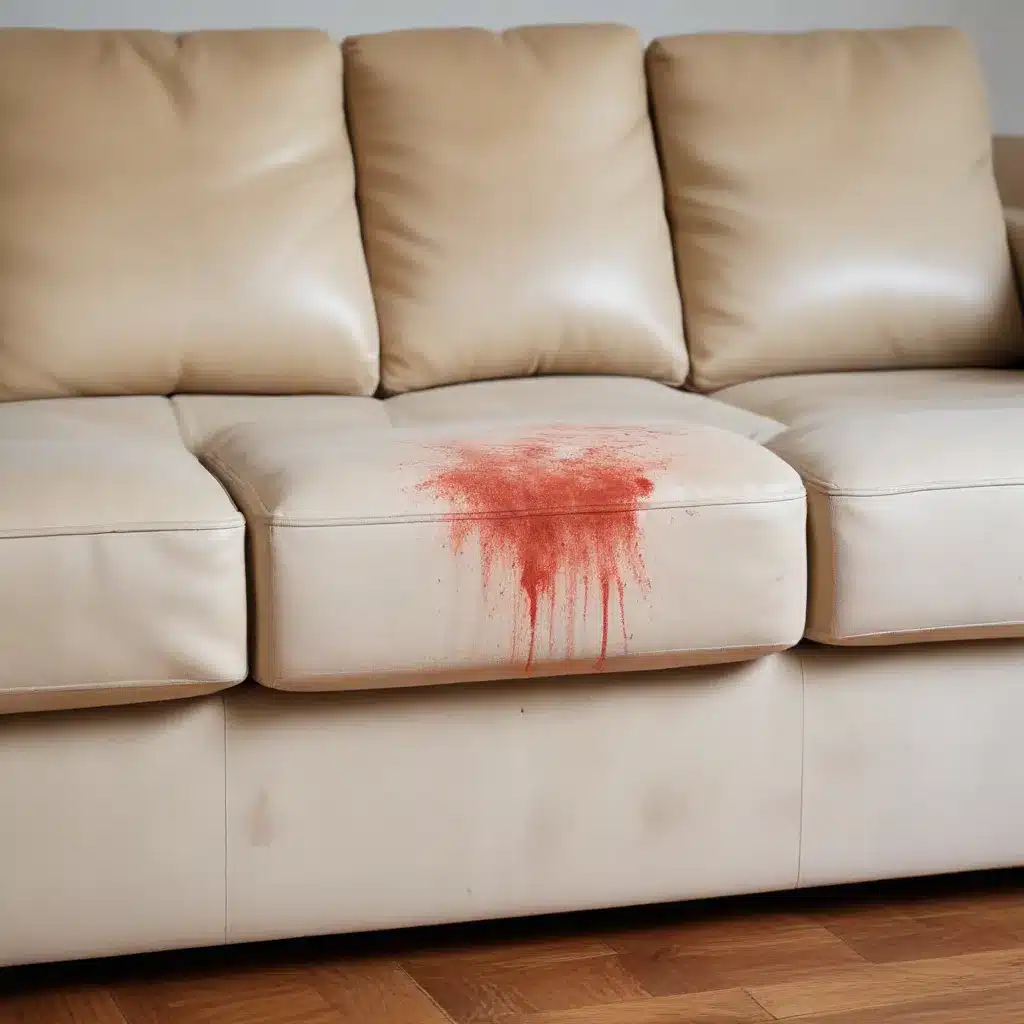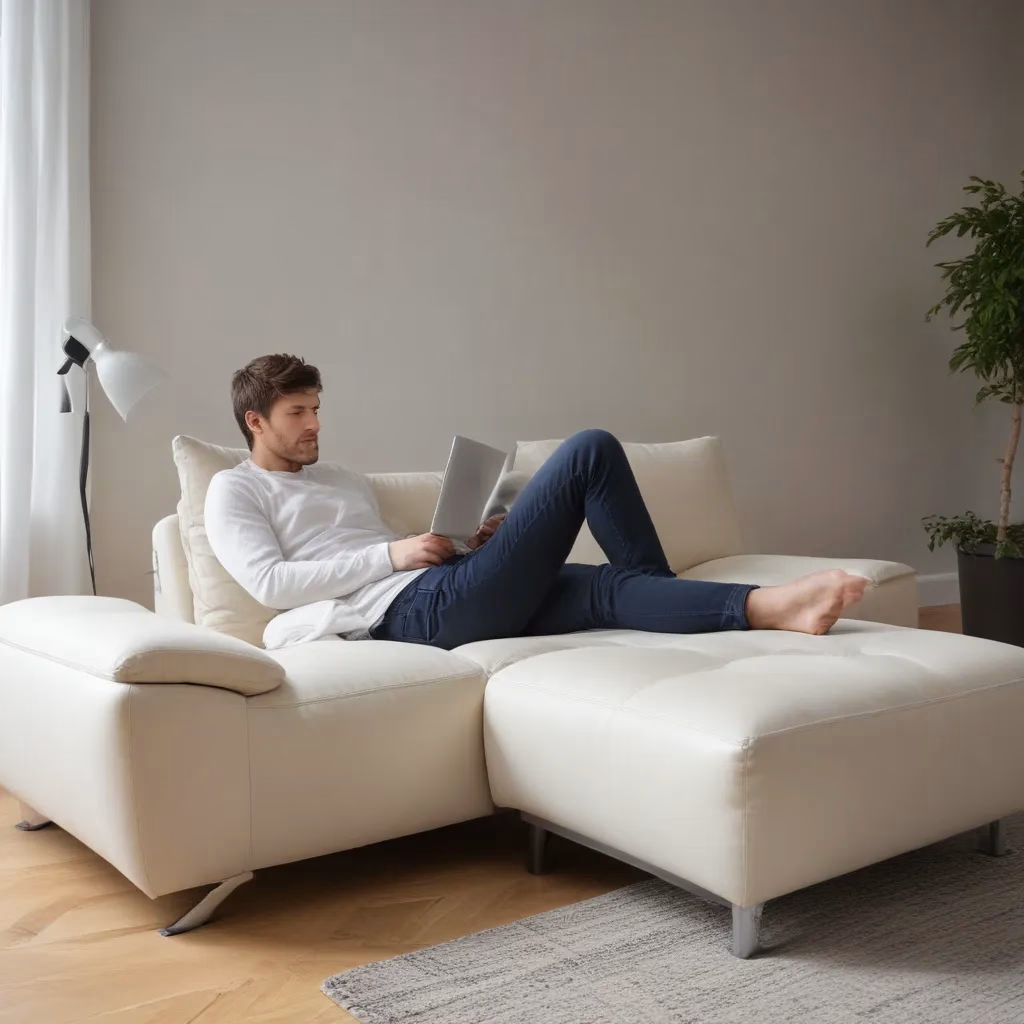
Understanding Common Sofa Stains
As a furniture specialist, I’ve encountered countless stained sofas over the years. From red wine spills to muddy paw prints, sofas often bear the brunt of our daily lives. The key to effective stain removal lies in understanding the nature of the stain and acting quickly.
Water-based stains, like coffee or tea, are generally easier to remove than oil-based ones. However, each type of stain requires a specific approach. For instance, protein-based stains such as blood or milk need cold water treatment, while tannin stains like wine or fruit juice respond better to warm water.
One of the most challenging aspects of sofa stain removal is dealing with old, set-in stains. These can be particularly stubborn, often requiring multiple treatments and a good deal of patience. In my experience, even the toughest stains can usually be improved, if not completely removed, with the right techniques and products.
Essential Tools for Sofa Stain Removal
Having the right tools at your disposal can make all the difference when tackling sofa stains. Over the years, I’ve assembled a kit that I always keep on hand for stain emergencies. Here’s what I consider essential:
- Clean white cloths or paper towels
- A gentle dish soap
- White vinegar
- Baking soda
- A soft-bristled brush
- A spray bottle
- A vacuum cleaner with upholstery attachment
These simple items can handle most common stains. For tougher jobs, I also keep a commercial upholstery cleaner on hand. However, I always recommend testing any cleaning solution on an inconspicuous area first to ensure it won’t damage or discolor the fabric.
One tool that’s become indispensable in my stain-fighting arsenal is a portable spot cleaner. These compact machines use water, cleaning solution, and suction to lift stains from upholstery. They’re especially useful for pet owners or households with young children where spills are frequent.
The Science of Stain Removal
Understanding the chemistry behind stains can greatly improve your chances of successful removal. Stains occur when a substance penetrates the fibers of the fabric and bonds with them. The goal of stain removal is to break this bond and lift the staining substance out of the fabric.
Different types of stains require different approaches:
| Stain Type | Examples | Best Removal Method |
|---|---|---|
| Protein-based | Blood, egg, milk | Cold water, enzyme cleaner |
| Tannin | Coffee, tea, wine | Warm water, white vinegar |
| Oil-based | Grease, makeup | Dish soap, baking soda |
| Dye-based | Ink, marker | Rubbing alcohol, commercial stain remover |
When treating a stain, it’s crucial to avoid rubbing, which can push the stain deeper into the fabric and spread it further. Instead, always blot from the outside of the stain towards the center.
Heat can set some types of stains, making them permanent. That’s why it’s generally best to use cool or lukewarm water when treating unknown stains. Only use hot water if you’re certain it won’t set the stain.
Step-by-Step Guide to Removing Fresh Stains
When a spill occurs, quick action is key. Here’s my tried-and-true method for tackling fresh stains:
-
Blot up as much of the spill as possible using clean white cloths or paper towels. Don’t rub!
-
If the spill is solid (like food), use a spoon or dull knife to carefully scrape off as much as you can.
-
Identify the type of stain if possible. This will help you choose the most effective treatment.
-
For water-based stains, mix a solution of mild dish soap and cool water. For oil-based stains, sprinkle baking soda on the spot and let it sit for 15 minutes before vacuuming.
-
Apply your cleaning solution to a clean white cloth, not directly to the stain. Gently blot the stain, working from the outside in.
-
Rinse the area by blotting with clean water to remove any soap residue.
-
Blot the area dry with a clean towel or cloth.
-
Allow the area to air dry completely. You can use a fan to speed up this process.
Remember, different fabrics may require different treatments. Always check your sofa’s care label before attempting any stain removal.
Dealing with Set-In Stains
Old, set-in stains present a unique challenge. They’ve had time to bond with the fabric fibers, making them more resistant to removal. However, don’t despair! I’ve had success with even the most stubborn stains using this method:
-
Start by vacuuming the stained area to remove any loose particles.
-
Mix a solution of one tablespoon of dish soap, one tablespoon of white vinegar, and two cups of warm water.
-
Using a clean white cloth, apply this solution to the stain. Work it gently into the fabric using a soft-bristled brush.
-
Let the solution sit for 15 minutes, then blot with a clean, damp cloth.
-
If the stain persists, mix a paste of baking soda and water. Apply this to the stain and let it dry completely before vacuuming.
-
For really tough stains, you might need to repeat this process several times.
-
Once the stain is gone, be sure to rinse the area thoroughly with clean water to remove any cleaning residue.
This method works well for many types of set-in stains, but particularly stubborn ones may require professional cleaning.
Specialized Stain Removal Techniques
Some stains require specific treatments. Here are a few I’ve found effective:
Red Wine: Blot up as much as possible, then cover the stain with salt. Let it sit for a few minutes, then vacuum. Follow up with a mixture of dish soap and hydrogen peroxide.
Coffee: Blot with a solution of vinegar and water, then follow up with a mixture of dish soap and water.
Ink: Dab the stain with rubbing alcohol using a cotton swab. Be careful not to oversaturate the fabric.
Grease: Sprinkle cornstarch or baking soda on the stain and let it sit for 15-20 minutes before vacuuming. Follow up with a mixture of dish soap and water.
Pet Accidents: Blot up as much as possible, then use an enzyme cleaner designed for pet stains. These break down the proteins in the stain and help eliminate odors.
Remember, always test any cleaning solution on an inconspicuous area first to ensure it won’t damage your sofa’s fabric.
Preventative Measures and Long-Term Care
While knowing how to remove stains is important, preventing them in the first place is even better. Here are some tips I share with my clients to keep their sofas looking their best:
-
Apply a fabric protector to your sofa. This creates a barrier that repels liquids and makes stains easier to clean.
-
Use slipcovers or throws in high-traffic areas or if you have pets or young children.
-
Vacuum your sofa regularly to prevent dirt and dust from settling into the fabric.
-
Address spills immediately. The longer a stain sits, the harder it is to remove.
-
Keep stain removal supplies on hand so you’re always prepared for accidents.
-
Have your sofa professionally cleaned once a year to maintain its appearance and extend its life.
By following these preventative measures, you can significantly reduce the likelihood of stains and keep your sofa looking fresh and clean for years to come.
When to Call a Professional
While many stains can be successfully treated at home, there are times when it’s best to call in a professional. In my experience, these situations include:
-
When the stain covers a large area of the sofa.
-
If you’re dealing with a delicate or expensive fabric like silk or leather.
-
When you’ve tried home remedies without success.
-
If you’re unsure about the type of fabric or the appropriate cleaning method.
-
When dealing with biohazards or potentially harmful substances.
Professional cleaners have access to specialized equipment and cleaning solutions that can tackle even the toughest stains. They also have the expertise to choose the right cleaning method for your specific type of sofa fabric.
If you’re in the market for a new sofa and want to explore options that are both stylish and stain-resistant, I recommend checking out the selection at Sofa Spectacular. They offer a range of high-quality sofas with various fabric options, including some that are specifically designed to resist stains and wear.
The Future of Stain-Resistant Sofas
As someone who’s been in the furniture industry for years, I’m excited about the advancements in stain-resistant technology. Manufacturers are developing new fabrics and treatments that make sofas more resistant to stains and easier to clean.
Some of these innovations include:
-
Nanotechnology coatings: These invisible treatments repel liquids and prevent them from penetrating the fabric fibers.
-
Performance fabrics: These are engineered to be highly durable and resist stains, fading, and wear.
-
Self-cleaning fabrics: While still in development, these fabrics use sunlight to break down organic matter, potentially making stains a thing of the past.
-
Smart fabrics: These can change their properties in response to different conditions, potentially offering enhanced stain resistance.
While these technologies are promising, it’s important to remember that no sofa is completely stain-proof. Regular maintenance and prompt attention to spills are still crucial for keeping your sofa looking its best.
Eco-Friendly Stain Removal Options
As environmental concerns become more pressing, many of my clients are asking about eco-friendly stain removal options. Fortunately, there are several effective, environmentally-friendly methods for tackling sofa stains:
-
Vinegar and water: This simple solution can handle many types of stains. Mix equal parts white vinegar and water in a spray bottle.
-
Baking soda: Great for absorbing odors and lifting stains. Make a paste with water for spot treatments.
-
Lemon juice: The natural bleaching properties of lemon can help with certain types of stains. Mix with salt for a more abrasive cleaner.
-
Hydrogen peroxide: While technically a chemical, it breaks down into water and oxygen, making it environmentally friendly.
-
Enzyme cleaners: These biological cleaners break down organic matter and are particularly effective on pet stains.
When using these methods, always remember to test on an inconspicuous area first and avoid oversaturating your sofa.
The Psychological Impact of a Clean Sofa
As a furniture specialist, I’ve noticed that the state of our sofas can have a significant impact on our mood and overall well-being. A clean, stain-free sofa can make a room feel more inviting and comfortable.
On the other hand, a stained or dirty sofa can be a source of stress and embarrassment, particularly when entertaining guests. It can also contribute to a general feeling of disorder in the home.
By keeping your sofa clean and addressing stains promptly, you’re not just maintaining a piece of furniture – you’re creating a more pleasant and relaxing living environment. This can have positive effects on your mental health and overall quality of life.
Conclusion: Embracing a Stain-Free Sofa Lifestyle
Dealing with sofa stains doesn’t have to be a daunting task. With the right knowledge, tools, and techniques, most stains can be successfully treated at home. Remember, quick action is key – the sooner you address a spill, the better your chances of complete removal.
Regular maintenance, including vacuuming and professional cleaning, can go a long way in preserving the appearance and longevity of your sofa. And don’t forget about preventative measures like fabric protectors and slipcovers.
While no sofa is completely immune to stains, advancements in fabric technology are making it easier than ever to keep our sofas looking fresh and clean. Whether you’re treating a stubborn set-in stain or looking to prevent future mishaps, I hope the tips and techniques shared in this article will help you maintain a beautiful, stain-free sofa for years to come.
Remember, your sofa is more than just a piece of furniture – it’s the heart of your living room, a place for relaxation, conversation, and making memories. By keeping it clean and well-maintained, you’re investing in your home’s comfort and your own peace of mind.



